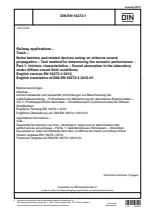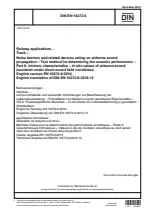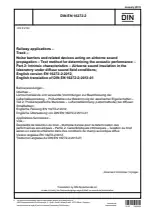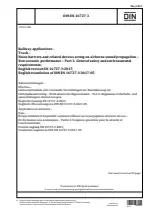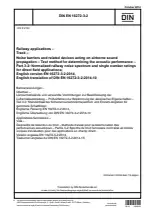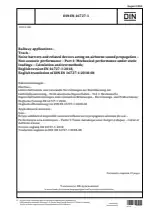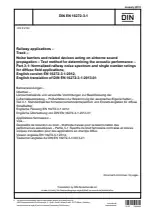Railway Applications - Track - Noise Barriers and Related Devices Acting on Airborne Sound Propagation - Test Method for Determining the Acoustic Performance - Part 1: Intrinsic Characteristics - Sound Absorption in the Laboratory Under Diffuse Sound Field Conditions
Also Known As:
The DIN EN 16272-1 standard specifies a laboratory test method for determining the acoustic performance of noise barriers and related devices that act on airborne sound propagation in railway track applications. Specifically, it focuses on the intrinsic characteristics of these devices by measuring their sound absorption under diffuse sound field conditions.
The standard covers the assessment of flat noise barriers or claddings for retaining walls or tunnels. It outlines the testing procedure using the EN ISO 354 method, which is appropriate for flat absorbers and excludes slightly damped resonators. However, it acknowledges that some devices may deviate from these requirements, and caution should be exercised in interpreting the results in such cases.
It is important to note that this standard is specific to noise barriers and related devices for airflow sound propagation and does not cover other noise-reducing devices like those for ground-borne vibration attenuation or on-board devices.
| Descriptors | Acoustic properties and phenomena, Acoustic testing, Acoustics, Airborne noise emitted, Airborne sound insulation, Definitions, Infrastructure, Laboratory testing, Measurement, Noise control (acoustic), Noise protection walls, Noise reduction, Product specification, Properties, Protective walls, Rail transport, Railway applications, Railways, Roadways, Sheeting, Sound absorption, Sound insulation measure, Sound propagation, Superstructure, Testing, Travel ways, Mouldings, Cages (machines), Architraves, Casing, Pavements (roads), Sheets, Permanent ways |
| ICS Codes | 93.100 - Construction of railways |
| Language(s) | English |
| File Size | 358.4 KB |

